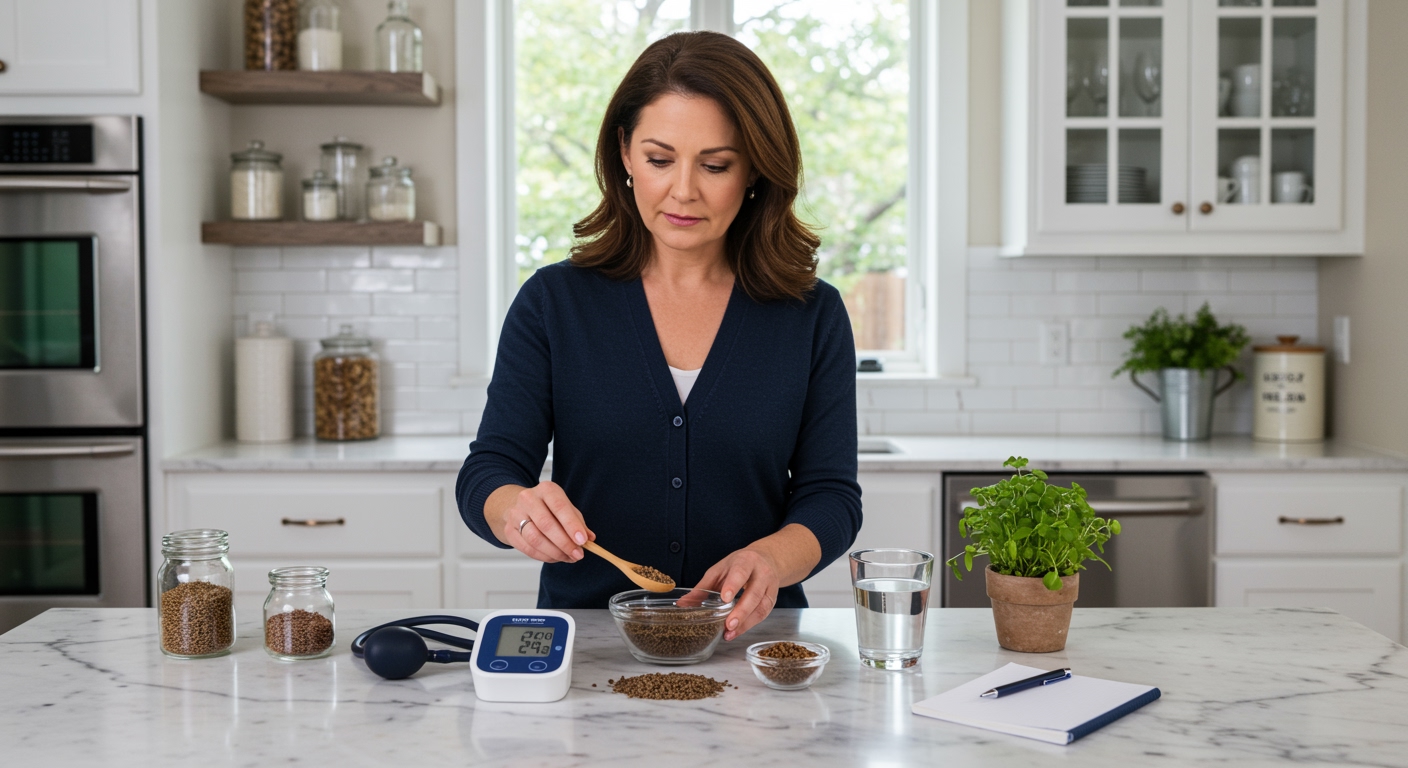✪ Key Takeaway: Pollock can help stabilize blood pressure through omega-3 fatty acids, potassium, and lean protein content.
Introduction
Your doctor just told you to watch your blood pressure, and now you are staring at the seafood counter wondering which fish might actually help.
You have probably heard that fish is good for your heart, but you want to know specifically about pollock because it costs less than salmon and tastes milder than most other options.
Hi, I am Abdur, your nutrition coach, and today I am going to explain exactly how pollock affects your blood pressure and whether this affordable fish deserves a spot on your dinner plate.
What Makes Pollock Different From Other Fish?
Pollock belongs to the cod family and swims in the cold waters of the North Pacific and Atlantic oceans.
This white fish contains about 20 grams of protein per 100-gram serving while keeping calories low at just 92 calories.
The omega-3 content in pollock reaches approximately 0.5 grams per serving, which is moderate compared to fatty fish like salmon but still significant for cardiovascular health.
Pollock also provides potassium at about 356 milligrams per 100 grams, along with magnesium and selenium that work together to support heart function.
The sodium content stays naturally low at around 86 milligrams per serving, making it suitable for people managing blood pressure.
Most importantly, pollock contains virtually no saturated fat, which helps maintain healthy cholesterol levels that directly impact blood pressure regulation.
✪ Fact: Pollock provides more protein per calorie than most other affordable protein sources.
How Do Omega-3s In Pollock Affect Blood Pressure?
The omega-3 fatty acids in pollock work by reducing inflammation in your blood vessels, which helps them relax and expand more easily.
When your blood vessels become more flexible, your heart does not need to pump as hard to circulate blood throughout your body.
Research shows that consuming omega-3s regularly can reduce systolic blood pressure by 2-4 mmHg and diastolic pressure by 1-3 mmHg in people with elevated levels.
The EPA and DHA in pollock also help your body produce nitric oxide, a compound that signals blood vessels to widen and improve circulation.
While pollock contains less omega-3s than salmon, eating it twice weekly still provides meaningful cardiovascular benefits when combined with other healthy lifestyle choices.
The key lies in consistency rather than getting massive doses from expensive fish that you might eat only occasionally.
✪ Pro Tip: Combine pollock with other omega-3 sources like walnuts and flaxseeds for maximum benefit.
Does The Potassium In Pollock Really Matter?
Potassium acts like a natural diuretic in your body, helping your kidneys remove excess sodium and water that can raise blood pressure.
The 356 milligrams of potassium in pollock represents about 8% of your daily needs, which might seem small but adds up when you eat it regularly.
Your body uses potassium to balance sodium levels in your cells, and this balance directly affects how much fluid your body retains.
When you consume adequate potassium, your blood vessels can maintain their natural elasticity and respond better to changes in blood flow.
Studies indicate that increasing potassium intake by just 1000 milligrams daily can reduce systolic blood pressure by 3-5 mmHg in people with hypertension.
Pollock becomes even more valuable when you consider that most Americans consume too much sodium and not enough potassium in their daily diet.
✪ Note: Pairing pollock with potassium-rich vegetables doubles your blood pressure benefits.
Can Lean Protein From Pollock Lower Blood Pressure?
High-quality protein from pollock helps your body maintain healthy blood vessels by providing amino acids needed for vessel repair and maintenance.
The amino acid arginine in pollock serves as a building block for nitric oxide production, which we discussed earlier as a key factor in blood vessel dilation.
Lean protein also helps with weight management, and maintaining a healthy weight reduces the workload on your cardiovascular system.
When you replace higher-calorie protein sources with pollock, you naturally reduce your overall caloric intake while still meeting your protein needs.
Research demonstrates that people who consume adequate lean protein tend to have lower resting blood pressure compared to those with insufficient protein intake.
The thermic effect of protein also means your body burns more calories digesting pollock compared to processing carbohydrates or fats.
✪ Pro Tip: Aim for 25-30 grams of protein from pollock to maximize satiety and blood pressure benefits.
What About Mercury And Other Concerns?
Pollock ranks as a low-mercury fish according to FDA guidelines, making it safe for regular consumption even for pregnant women and children.
The mercury content in pollock averages around 0.031 parts per million, which is significantly lower than larger predatory fish like tuna or shark.
However, you should be aware that most pollock sold in stores comes frozen or processed into products like fish sticks or imitation crab.
These processed versions often contain added sodium, which can counteract the blood pressure benefits of the fish itself.
Fresh or plain frozen pollock without added ingredients gives you the maximum cardiovascular benefits without unwanted sodium or preservatives.
Always check ingredient labels on any pollock products to ensure you are not accidentally consuming hidden sodium sources that could raise your blood pressure.
✪ Note: Choose plain frozen pollock fillets over breaded or seasoned varieties to avoid excess sodium.
The Bottom Line
Pollock can definitely help stabilize your blood pressure when you eat it as part of a balanced diet that includes plenty of vegetables and whole grains.
The best medicine for your blood pressure is often the food you choose to put on your plate every single day.
I would love to hear about your experience with pollock or any questions you have about using fish to support your cardiovascular health, so please share your thoughts in the comments below.
References
At NutritionCrown, we use quality and credible sources to ensure our content is accurate and trustworthy. Below are the sources referenced in creating this article:





